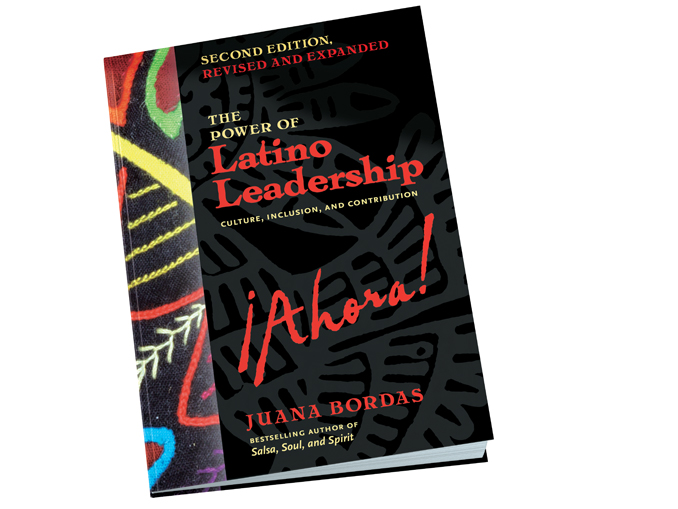Reviewed by Natalia Infante Caylor, PhD, Cross-Cultural Researcher, Hola Insights, Huntsville, Alabama, natalia@holainsights.com
Set aside anything and everything you thought you knew about Latinos and grab this book; it is full of history about what makes Latinos such a unique yet complex segment. Juana Bordas, an accomplished immigrant from Nicaragua, shares about the Spanish language, culture, faith, and history dating back to the Roman Empire and colonization, and much more. She beautifully mixes English and some keywords in Spanish throughout her book, yet also shares what each Spanish word means; whether you know some Spanish or not, this book is for you.
In The Power of Latino Leadership (2023), Bordas has revised and updated her award-winning book, originally published in 2013, and helps readers understand more about how Latinos think, lead, and how they are instilling the Latino essence in the United States. So, why is this segment important? Hispanics (those from Spanish-speaking ancestry) account for about 19 percent of the U.S. population. According to Demographic Turning Points for the United States: Population Projections for 2020 to 2060 (U.S. Census, 2020), this segment is expected to almost double in size within the next 40 years.
By reading this book, non-Latinos can expect to learn how to adapt to different cultures, be more inclusive, embrace the diversity of Latino contributions in the U.S., and learn lessons about leadership that they can apply in their own lives. In addition, at a time when Latinos’ purchasing power exceeds $2 trillion, and many are our coworkers and colleagues, it is imperative that we learn what makes this segment so unique in many ways.
The book is a representation of contributions of the Latino culture that you might already be aware of—from delightful food and drinks (tacos, cafés, margaritas at night, salsa), exciting movies (Encanto, Coco), and musical genres (salsa, merengue, bachata). However, readers can also learn so much more to deepen their understanding of Latino leadership principles and also learn how to connect with Latinos and establish trust and credibility. In this book, Bordas gives us an insider’s view into what makes Hispanics unique, based on a set of values grounded in a sense of community, family, hope, and hard work.
The book is comprised of five main parts and 13 chapters. Part I talks about the history of Latinos, from their ancient roots to their strong presence in the U.S.; Part II describes how Latinos prepare to lead and what makes them good leaders; Part III describes how faith, hope, and culture play a role in leadership; and Parts IV and V talk more about putting leadership into action through activism and collaboration, as well as looking into the future. At the end of each chapter, readers can reflect on each of the guiding questions offered to better understand and apply the cultural information shared by the author.
Bordas herself has a fascinating story. She was born and raised in Nicaragua and forced to move to the U.S. with her family due to natural disasters. She learned leadership from her immigrant parents and was the first in her family to go to college. She later joined the Peace Corps in Chile and founded Mi Casa Resource Center in Denver, Colorado, years after. She also founded the National Hispana Leadership Institute and served as an advisor to Harvard’s Journal of Hispanic Policy and the Kellogg National Fellows Program. Bordas has also received a number of other professional honors.
If you are looking for a better way to understand Latinos, this book is for you, and if you are a Latino living in the U.S., this book may answer many questions you did not even know you had before. This book is an eye-opening view into the basis for Latino leadership and transformation in mainstream America.




